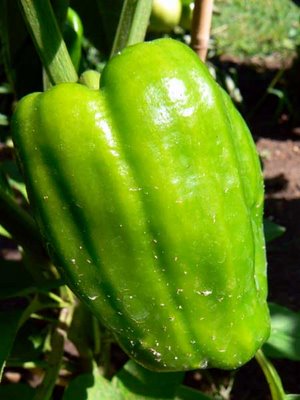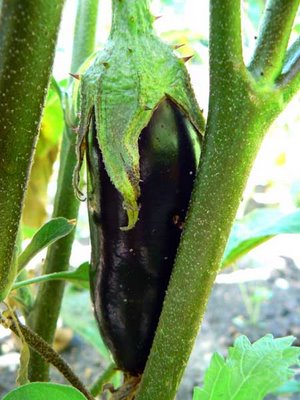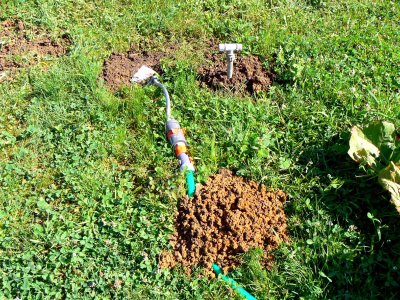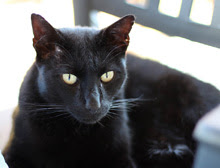Tuesday we hosted a couscous party for 7 in our back yard. On what was arguably the hottest day of the year (turns out that Wednesday was the hottest), we made a huge pot of stewed lamb and chicken and all the attendant vegetables, cooked
merguez sausages in the oven, and steamed the
semoule on top of the stove. What were we thinking?
 On the left: potatoes peeled and waiting to be added. On the right, the semoule after its first steaming.
On the left: potatoes peeled and waiting to be added. On the right, the semoule after its first steaming.Couscous is a dish that I think originated in North Africa - Morocco, Tunisia, Algeria - and came to France with returning colonists and the immigrants from those parts. It's essentally a stew of vegetables (carrots, onions, potates, leeks, beans, turnips, squash, tomato, etc.) with lamb and chicken that is browned and stewed to make a savory broth. There are lots of spices and herbs, the main spice being
raz-el-hanout, a blend of cumin, turmeric, ginger, nutmeg, coriander, and cardamom. You pump up the volume with cayenne, hot paprika, saffron, and anything else that strikes you.
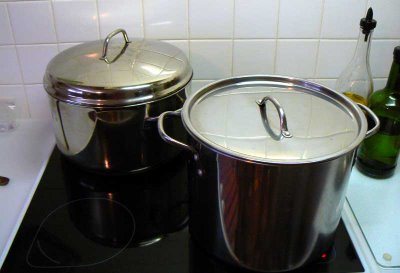 Two pots of stew simmering on the stove.
Two pots of stew simmering on the stove.The stew is served over a bed of pasta grain, commonly called
la semoule, a fine round pasta that is prepared in a process that includes humidifying then steaming over the simmering broth of the stew. This is accompanied by
merguez (a spicy lamb sausage), chick peas that have been heated in the hot broth, and golden raisins.
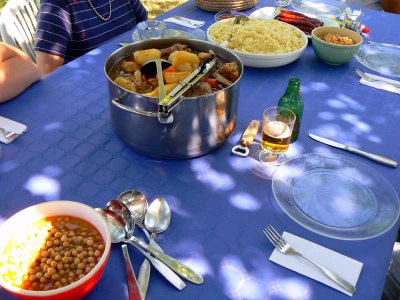 The couscous is served!
The couscous is served!The kicker and absolutely essential component of a good couscous is the
harissa, a red pepper and vegetable paste that gets mixed with some broth and poured over your serving, to taste, just before you dig in.
 Harriet puts some broth in a pitcher to mix with the harissa while we all watch intently.
Harriet puts some broth in a pitcher to mix with the harissa while we all watch intently.There are as many varieties of couscous as there are people who make it, and we've been using our friend Harriet's recipe as the base of ours for close to twenty years. Harriet spent time in North Africa as a student and learned from a practiced cook.
 Everybody's happy!
Everybody's happy!We set up the party table out back under the big apple tree next to our vegetable garden. Everybody lent a hand to get the food and utensils out to the table from the kitchen; with 7 people it took no time at all. We sat down to eat a little after 2 p.m.
Bon appétit !
 The final day of July 2006 goes out with a patriotic tricolore of sorts. This was taken back in May at the Château de Chenonceau.
The final day of July 2006 goes out with a patriotic tricolore of sorts. This was taken back in May at the Château de Chenonceau.



































